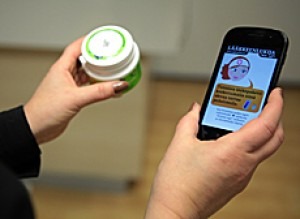
VTT Technical Research Centre of Finland has developed new Near Field Communication (NFC) applications designed to make life easier for the visually impaired
The work was part of the HearMeFeelMe project, a collaborative effort by VTT, TopTunniste (Finland) Tecnalia (Spain) and Demokritos (Greece), which introduced five different applications for acquiring medical information, all of them based on NFC technology.
Test subjects were asked to look at a range of products that used NFC.
End users participating in the project represented the Finnish Federation of the Visually Impaired (FFVI), the Caritas Foundation, Joutsen Pharmacy 6 in Oulu and SSI, a Spanish provider of geriatric services.
The testers' favourite was Top Tunniste's Touch 'n' Tag demo, a mobile phone application that enables visually impaired users to identify everyday items, including food, with the help of voice memos.
The phone must be equipped with an NFC reader.
To record a memo tag, the user touches the NFC label on the packaging and dictates the information into the phone.
The recording can then be listened to by touching the label again with the phone.
The test run indicated that the application was most commonly used to mark food packaging.
According to the majority of users, it was useful in recognising items and recalling product information.
Another demo application developed during the HearMeFeelMe project, completed at the end of 2011, was 'speaking' medicine packaging.
When touched, the packaging provides spoken dosage instructions and other important information.
The data was stored on the NFC chip by pharmacy staff and could be listened to by the user at home.
The demo version was only available for PC, but the application is designed to run on programmable smartphones equipped with an NFC reader and a code scanner.
Not yet tested by end users was an almanac demo designed to ensure properly-timed medication, using the elderly person's own social network.
This enables nurses and family members to remind the patient of scheduled doses of medicine or meetings.
The user receives the reminder as a message on his or her mobile phone and replies with an NFC acknowledgement.
In the future, VTT hopes visually impaired people will use NFC applications for a variety of purposes, including item recognition, spoken product information on food or medicine packaging, personal reminders, calendars or spoken manuals for home appliances.
However, most current mobile phones do not support advanced NFC applications and the new solutions are designed for platforms not yet on the market.

